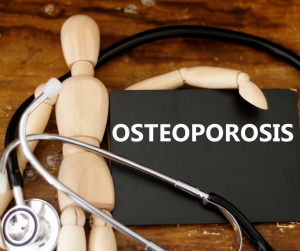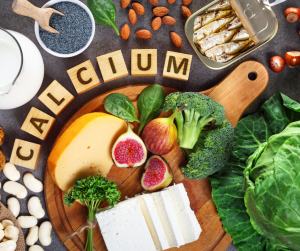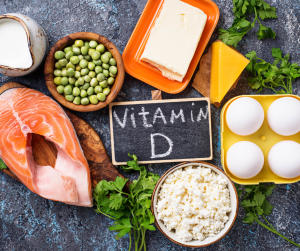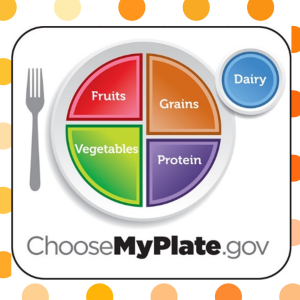Why do we say “Get your calcium-rich foods”, “Get enough Vitamin D”, and “Eat low-fat or fat-free dairy products?”
Why do I need to eat or drink calcium-rich foods and food containing Vitamin D?
These two nutrients can provide health benefits to your body. Calcium helps build and maintain strong bones and teeth and helps with other body functions. Calcium and Vitamin D are two important nutrients included in the diet at any age. Consuming dairy products can help to improve bone health in kids and help prevent osteoporosis in adults.
Calcium is a mineral our bodies need to build strong bones and teeth and to help with other body functions. Vitamin D helps absorb the calcium we get from food. Read all of the links in this blog to learn more about calcium and Vitamin D.

Osteoporosis is a condition in which bones become porous and weakened. Those with osteoporosis are at a high risk of bone fractures. Broken bones, such as a hip fracture, are painful and often result in loss of independence, especially in the elderly. No matter your age, you can take steps to build bone mass and prevent bone loss. Keeping bones strong is an important health goal for all of us. https://www.womenshealth.gov/a-z-topics/osteoporosis

What are some of the foods that contain calcium?
- Milk
- Cheese
- Yogurt
- Sardines
- Salmon
- Tofu
- Cottage cheese
- Collard greens, spinach, and kale
- Calcium-fortified soy milk
- Calcium-fortified orange juice and grapefruit juice
Food Sources of Calcium | Dietary Guidelines for Americans
Why do I need to get enough Vitamin D?
Lack of vitamin D affects bones and many other parts of the body. We need to get enough vitamin D from all sources to have adequate levels of it in our blood. https://edis.ifas.ufl.edu/publication/FY207

What are some sources of Vitamin D?
- Milk fortified with Vitamin D
- Rainbow trout, freshwater
- Herring
- Salmon
- Canned tuna
- Sardines
- Flounder
- Yogurt
- Eggs
- Fortified breakfast cereals
Food Sources of Vitamin D | Dietary Guidelines for Americans
How much do I need from the MyPlate dairy group each day?
On the MyPlate icon, the round, blue group is known as the dairy group. The amount you need depends on your age, height, weight, gender, physical activity, and health condition. Per MyPlate, 90% of us do not get enough dairy products. https://www.myplate.gov/eat-healthy/dairy On average, aim for three servings of fat – free or low – fat dairy foods and/or calcium-fortified soy milk each day. Read more for information on suggested amounts for different age groups. Low-fat or fat-free dairy products may be healthier choices, that can improve your dairy group intake. Reducing fat intake may be good for your heart and help control your body weight.

How much calcium on average is recommended each day?
- Children aged 1 to 3 – 700 mg/day
- Children aged 4 to 8 – 1,300 mg/day
- Preteens and teens aged 9 to 18 – 1,300 mg/day
- Adults aged 19-50 – 1,000 mg/day
- Women older than age 50 and men older than age 70 – 1,200 mg/day
- Men aged 53 to 70 -1,000 mg/day
https://www.niams.nih.gov/health-topics/calcium-and-vitamin-d-important-bone-health
Please remember!
Always follow your healthcare provider’s advice regarding your diet, health, calcium and Vitamin D needs, supplement use, and well-being. Be sure to include adequate amounts of food and beverages from the MyPlate dairy group daily. To keep your bones and teeth strong, get adequate calcium, and Vitamin D each day to stay healthy.

An equal opportunity institution.
Source: UF/IFAS Pest Alert
Note: All images and contents are the property of UF/IFAS.



